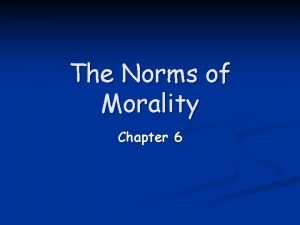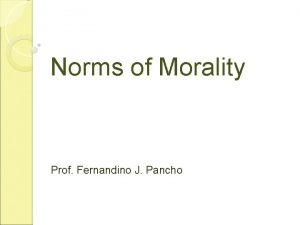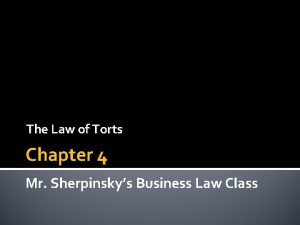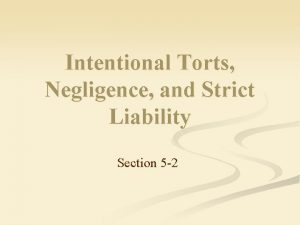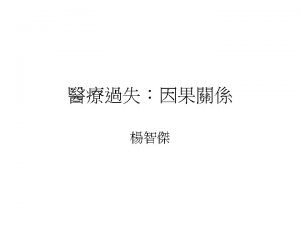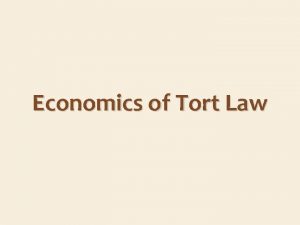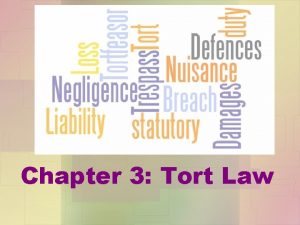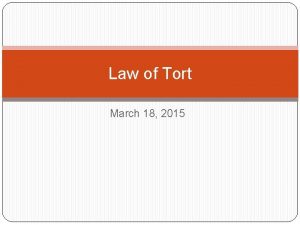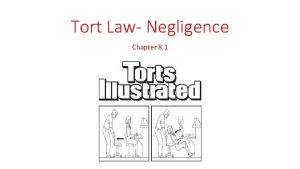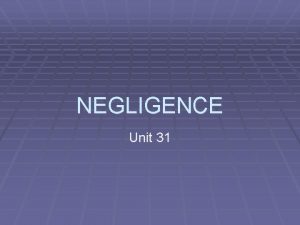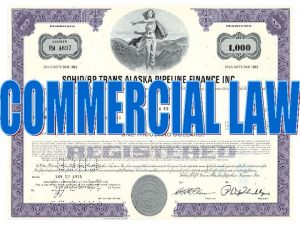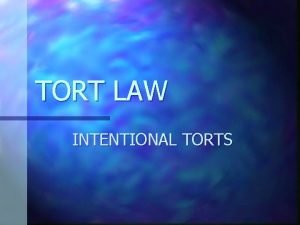Proximate Causation How to Make a Tort or










- Slides: 10

Proximate Causation

How to Make a Tort (or a Torte) 1. Duty & Breach 2. Causation in Fact & Proximate Causation 3. Injury & Damages Duty, breach, causation in fact, injury, and damages are the “ingredients. ” Proximate cause is the “recipe” that tells you how they all must fit together.

Proximate Causation/Scope of Liability Restatement 3 d § 29 calls proximate causation Scope of Liability: • “An actor’s liability is limited to those harms that result from the risks that made the actor’s conduct tortious. ”

Proximate Causation No bright-line rule for proximate causation! Commenters use the following phrases: • “Foreseeable consequences” • “Natural and probable consequences” • The result of a “continuing sequence of events”

Proximate Causation: Foreseeable Consequences

The Wagon Mound Cases • Ds will not be held liable for all direct consequences (compare Polemis), but only those that are reasonably foreseeable. • Framing this in terms of the Hand Formula: Wagon Mound holds that the set of risks that cause an act to be labeled negligent (PL in the B<PL) is the same set that defines the defendant’s liability as a matter of proximate cause.

Kinsman Transit • No liability where an injury springs “from a hazard different than that which was improperly risked” • D will be liable only if his breach causes damage that is: (1) direct, and (2) “of the same general sort, from the same forces, and to the same class of persons” that was risked.

Proximate Causation What does it mean for the harm to be “of the same general sort, from the same forces, and to the same class of persons” that was risked, as required by Kinsman? We might consider: • Type of injury (and to whom) • Manner of harm (process, chain of events) • Magnitude of harm (how large are the damages) • Temporal/spatial proximity • Policy/practical implications

Problem: United Novelty v. Daniels Rat soaked in gasoline leads to explosion. Liability for asking employee to use gasoline in a room with a lit heater? Consider: • Type of injury (and to whom) • Manner of harm (process, chain of events) • Magnitude of harm (how large are the damages) • Temporal/spatial proximity • Policy implications

Problem: United Novelty v. Daniels “Negligence would be predicated of the juxtaposition of the gasolene and the open flame. Under similar circumstances, the particular detonating agency, whether, as here, an animate version of the classic lighted squib, or as in Johnson v. Kosmos Portland Cement Co. , a bolt of lightning, was incidental except as illustrating the range of foreseeability. ”
 Polygyny in animals
Polygyny in animals Proximate causation biology example
Proximate causation biology example Proximate vs ultimate causation
Proximate vs ultimate causation Biological plausibility
Biological plausibility It is the remote norm of morality
It is the remote norm of morality Difference between innate and learned behavior
Difference between innate and learned behavior Advantages and disadvantages of proximate analysis
Advantages and disadvantages of proximate analysis Norms of morality
Norms of morality Greylag goose egg-retrieval behavior
Greylag goose egg-retrieval behavior Intentional tort examples
Intentional tort examples Strict liability crimes
Strict liability crimes




